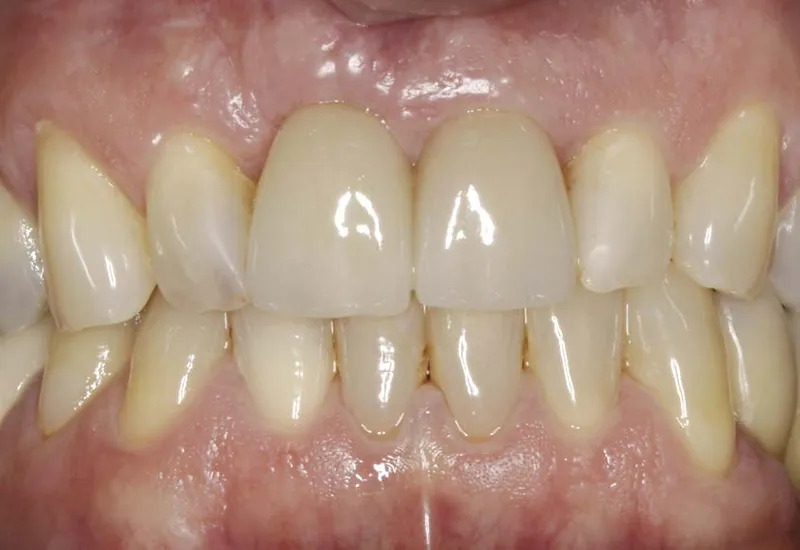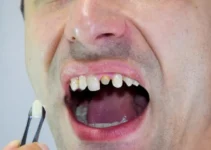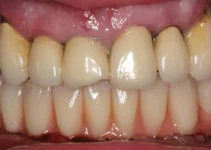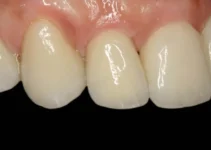Exploring teeth whitening at home can be a convenient and cost-effective way to brighten your smile. This method allows you to enhance your teeth’s appearance using various products like whitening strips, gels, or natural remedies. While easily done from the comfort of your home, it’s vital to understand the proper techniques and safety precautions to ensure you achieve the best results without causing damage to your enamel or gums. Always consult with a dental professional before starting any new whitening regimen to tailor the best approach based on your individual oral health needs.
Understanding Teeth Whitening at Home
Teeth whitening is a popular cosmetic procedure aimed at lightening the natural color of your teeth without removing any of the tooth surface. Understanding the ins and outs of teeth whitening at home can help you achieve a brighter smile safely and effectively. With various over-the-counter products available, it is crucial to know how to use them correctly and what to expect from them.
Before diving into home teeth whitening, it’s essential to grasp the basic concepts of how it works, the benefits it offers, and potential risks involved. This knowledge empowers you to make informed decisions and ensures the health and safety of your oral cavity. In the following sections, we will explore these topics in detail.
What is Teeth Whitening?
Teeth whitening involves using products such as gels, strips, or trays to lighten the shade of your teeth. These products typically contain bleaching agents like hydrogen peroxide or carbamide peroxide. When applied to the teeth, these agents break down stains into smaller pieces, making the color less concentrated and your teeth brighter.
There are two primary types of teeth whitening methods: extrinsic whitening and intrinsic whitening. Extrinsic whitening targets the surface stains on the teeth caused by external factors such as coffee, tea, or smoking. Intrinsic whitening, on the other hand, addresses deeper, internal stains that may result from aging, medication, or trauma.

Over-the-counter products are typically designed for extrinsic whitening, while professional treatments conducted by dentists can tackle both extrinsic and intrinsic stains. Understanding the type of stain you have can help you choose the most effective whitening method.
Benefits of Whitening Your Teeth at Home
Whitening your teeth at home comes with several advantages. One of the most significant benefits is convenience. You can perform the procedure at your own pace and in the comfort of your home, eliminating the need for multiple dental visits. Additionally, home whitening kits are usually more cost-effective than professional treatments.
Other benefits include:
- Accessibility: A wide range of products is available over-the-counter, making it easy for anyone to start the whitening process.
- Customization: Some kits offer moldable trays that fit your teeth perfectly, ensuring even application of the whitening gel.
- Gradual Results: Home whitening typically offers gradual results, allowing you to achieve your desired shade without the immediacy that might cause discomfort.
Because these treatments are less potent than professional options, they pose a lower risk of sensitivity and damage, making them suitable for people with mildly stained teeth.
Potential Risks of Home Teeth Whitening
While home teeth whitening can be effective and convenient, it is not without its risks. One of the most common issues is tooth sensitivity. The bleaching agents in whitening products can irritate the nerves in your teeth, leading to temporary discomfort. In some cases, this sensitivity can become more pronounced with repeated use.
Other potential risks include:
- Gum Irritation: Improper application of the whitening gel can cause it to come into contact with your gums, leading to irritation or burns.
- Uneven Results: If the whitening gel is not evenly applied, you could end up with patchy results, creating a mismatched look on your teeth.
- Overuse: Overusing whitening products can weaken your tooth enamel, making your teeth more vulnerable to decay and other dental issues.
It’s also important to note that not all discolorations respond well to home whitening treatments. For example, teeth with intrinsic stains or those discolored by medications may require professional intervention for effective results.
By understanding these potential risks, you can take the necessary precautions to avoid them, such as following the product instructions carefully and consulting your dentist before starting any whitening regimen.
For more in-depth insights into dental care and cosmetic treatments, be sure to explore our other articles. Your journey to a healthier, brighter smile begins with the right information.
Methods for Teeth Whitening at Home
Having a bright, white smile is something many people desire. While professional dental treatments can be effective, there are several methods to whiten your teeth at home that can also be quite effective. In this article, we will explore various at-home teeth whitening methods, from over-the-counter products to DIY solutions. By understanding your options, you can choose the best approach for achieving a whiter smile.
It’s important to remember that while at-home whitening methods are convenient, they may not be suitable for everyone. Always consult with a dental professional before starting any whitening regimen to ensure it is safe for your specific dental needs. Additionally, maintaining proper oral hygiene and regular dental check-ups are crucial for long-term dental health.
Whitening Toothpaste and Rinses
Whitening toothpaste and rinses are among the most accessible and easy-to-use methods for achieving a brighter smile. These products often contain mild abrasives and chemicals like hydrogen peroxide or carbamide peroxide that help remove surface stains. While they may not provide dramatic results, they can be effective for maintaining and enhancing the whiteness achieved through other methods.
When selecting a whitening toothpaste or rinse, look for those with the American Dental Association (ADA) seal of approval. This ensures that the product has been tested for safety and effectiveness. It’s also important to note that while these products can help remove surface stains, they may not be effective for deeper discoloration.
In addition to their whitening properties, many of these products also offer other oral health benefits, such as controlling plaque and reducing cavities. For best results, use whitening toothpaste and rinses as part of your regular oral hygiene routine, along with brushing and flossing.
Whitening Strips and Gels
Whitening strips and gels are popular choices for at-home teeth whitening. These products contain peroxide-based bleaching agents that penetrate the enamel and remove deeper stains. Whitening strips are thin, flexible pieces of plastic coated with a whitening agent, while gels come in a bottle and are applied with a brush or tray.
To use whitening strips, you simply apply them to your teeth and leave them on for the recommended amount of time, usually 20-30 minutes. Gels are typically applied in a similar fashion, using a brush or mouth tray to ensure even coverage. Both methods require consistent use over a period of days or weeks to see noticeable results.
While whitening strips and gels can be effective, they may cause tooth sensitivity or gum irritation in some users. It’s important to follow the instructions carefully and avoid overuse. If you experience significant discomfort, discontinue use and consult your dentist.
DIY Whitening Solutions
For those who prefer natural or DIY approaches, there are several household items that are said to help whiten teeth. While the evidence supporting their effectiveness is mostly anecdotal, some people find these methods helpful. Popular DIY whitening solutions include baking soda, hydrogen peroxide, and apple cider vinegar.
Baking soda is a mild abrasive that can help remove surface stains. To use, mix it with a small amount of water to create a paste and brush your teeth with it a few times a week. Hydrogen peroxide is a bleaching agent that can be used as a mouth rinse or mixed with baking soda to create a whitening paste.
Apple cider vinegar is another common DIY solution. Its acidic nature helps remove stains, but it’s important to use it sparingly to avoid damaging tooth enamel. Dilute apple cider vinegar with water and use it as a mouth rinse no more than a few times per week.
While these DIY solutions can be tempting, use them with caution. Overuse or improper application can lead to enamel erosion, tooth sensitivity, or other dental issues. Always consult with your dentist before trying any new whitening method, especially DIY solutions.
For more tips and insightful articles on dental health, be sure to explore our other articles and stay informed on the best ways to maintain a healthy, beautiful smile.
Tips for Effective Teeth Whitening at Home
Having a bright, white smile is a common desire for many people, and achieving this can often be done from the comfort of your own home. There are several tips and techniques available to help you effectively whiten your teeth without professional intervention. In this article, we will explore some key strategies, including maintaining oral hygiene, avoiding foods and drinks that stain, and understanding the importance of consistency and patience.
It’s essential to remember that while at-home teeth whitening can be effective, it is crucial to follow the guidelines carefully to avoid damaging your teeth and gums. Professional advice should always be sought if you have any doubts or underlying dental issues. With the right approach and dedication, achieving a radiant smile is possible.
Maintaining Oral Hygiene
One of the most fundamental steps to achieve white teeth is maintaining excellent oral hygiene. Regular brushing and flossing help remove surface stains and prevent plaque buildup, which can cause discoloration. Using a toothpaste containing fluoride and approved whitening agents can be particularly beneficial.
Ensure you brush your teeth at least twice a day for two minutes each time, and don’t forget to clean your tongue, as it can harbor bacteria that contribute to bad breath and potential staining. Flossing daily is equally important as it removes food particles and plaque from between the teeth and below the gum line where a toothbrush can’t reach.
Consider using an electric toothbrush, which can be more effective at removing stains and plaque than a manual toothbrush. Regular dental checkups and professional cleanings are also crucial components of an effective oral hygiene routine.
Avoiding Foods and Drinks that Stain
Another essential tip for maintaining white teeth is to avoid foods and drinks that can cause staining. Common culprits include coffee, tea, red wine, and certain fruits like berries. These substances contain chromogens, which are pigment-producing substances that can adhere to the enamel of the teeth and cause discoloration.
If you cannot avoid these foods and drinks, consider rinsing your mouth with water immediately after consumption to minimize their staining effects. Drinking through a straw can also help reduce contact with your teeth, especially with beverages like coffee and red wine.
Additionally, cutting down on sugary foods and drinks can prevent decay and staining. Sugar feeds oral bacteria that produce acids, which can erode enamel and lead to discoloration. Opt for a diet rich in crunchy fruits and vegetables like apples, carrots, and celery, which can naturally clean your teeth and stimulate saliva production, aiding in the removal of food particles and stains.
Consistency and Patience
Teeth whitening is not an overnight process, and consistency and patience are critical for achieving and maintaining results. Whitening products, whether over-the-counter or prescribed by a dentist, often require regular application over weeks or months to see significant changes. Follow the instructions provided with any whitening products carefully to avoid overuse, which can lead to tooth sensitivity and gum irritation. It’s equally important to maintain your regular oral hygiene routine alongside these treatments to ensure overall dental health.
Keep in mind that results can vary from person to person based on factors such as the original shade of your teeth, the type of stains, and the method of whitening used. Being patient and persistent with your whitening regimen will yield the best outcomes. If you experience any adverse effects, consult with your dentist for alternatives or additional advice. For more in-depth information on teeth whitening and other dental care tips, be sure to explore our other articles, and stay informed on the best practices for maintaining a healthy and beautiful smile.
Frequently Asked Questions on Teeth Whitening at Home
If you’re considering whitening your teeth at home and want quick insights, here are the most common queries answered to help you achieve a bright smile safely and effectively.
What is the best method to whiten teeth at home?
The best method for teeth whitening at home typically involves using over-the-counter whitening kits that include peroxide-based whitening gels or strips. These treatments are designed to be used for a specified period, usually ranging from a week to a month, depending on the product’s instructions and the desired whiteness level. Additionally, maintaining good oral hygiene and using whitening toothpaste can help enhance and prolong the results.

My name is Salman Kapa, a 73-year-old expert in bone regeneration and dental implantology. With decades of experience in the field, I am dedicated to advancing our understanding of oral health and hygiene. Through my research and writing, I aim to contribute to the development of innovative solutions in dental care.




